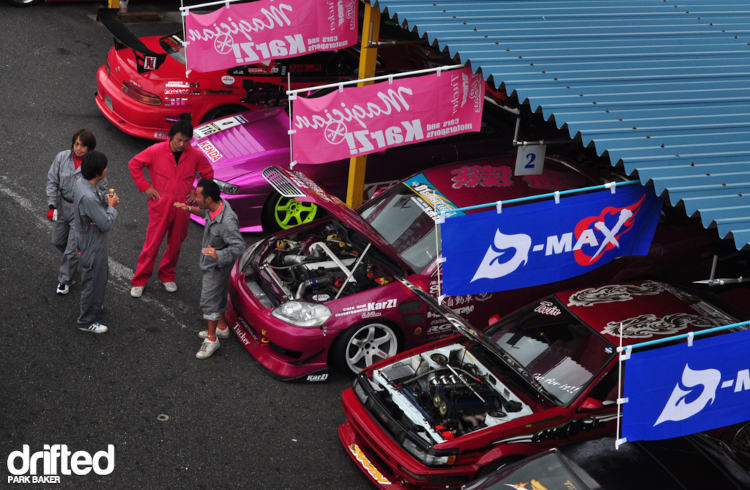Are you fascinated by the world of RC cars and looking for a new and exciting challenge? Look no further than RC drift car racing! In this comprehensive guide, we will walk you through all the essential information you need to know to get started in this adrenaline-pumping hobby. From choosing the right drift car to understanding the different types of tires and tracks, we’ve got you covered. Whether you’re a complete novice or have some experience with RC cars, this guide will equip you with the knowledge and skills to become a pro in no time. Get ready to experience the thrill of drifting, where precision and control meet pure excitement!
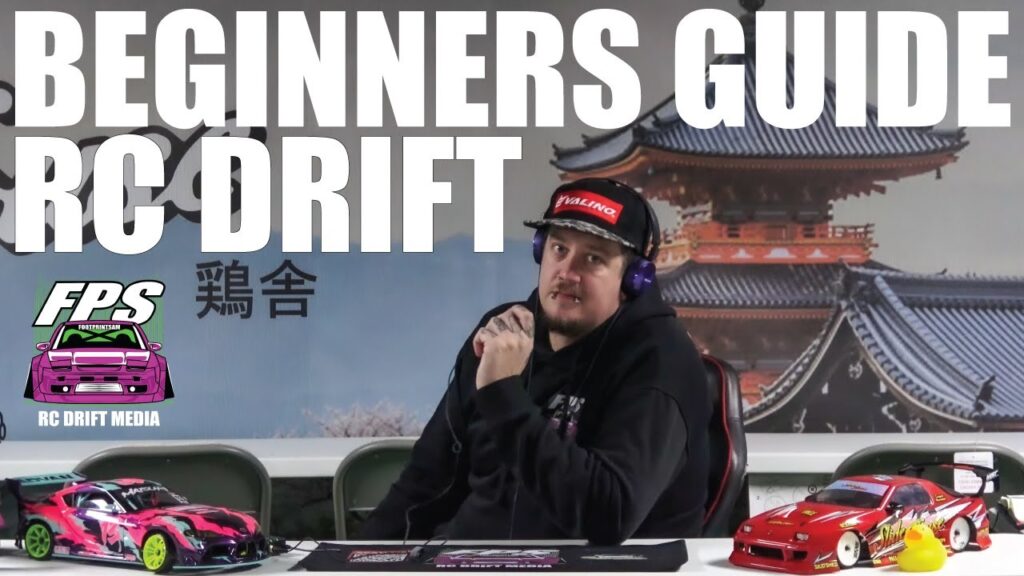
Table of Contents
Choosing the Right RC Drift Car
Understanding the Different Types of RC Drift Cars
When it comes to choosing the right RC drift car, understanding the different types available is crucial. There are two main types: electric and nitro. Electric cars are powered by batteries and are the most popular choice for beginners due to their ease of use and maintenance. On the other hand, nitro cars are powered by a small engine that runs on a mixture of fuel and nitro. They offer a more realistic experience but require more maintenance and expertise to operate. Ultimately, the choice between electric and nitro will depend on your preferences and level of experience.
Considering the Scale and Size
The scale and size of an RC drift car play a significant role in your overall experience. The most common scales range from 1:10 to 1:18, with 1:10 being the standard size. Smaller scales offer more maneuverability and agility, making them ideal for tight spaces or indoor tracks. On the other hand, larger scales provide a more realistic appearance and better stability, making them a better choice for outdoor tracks or drift competitions. Consider where you’ll primarily be using your RC drift car and choose a scale and size that suits your needs.
Evaluating the Level of Customization
RC drift cars offer a wide range of customization options that allow you to personalize your vehicle’s appearance and performance. Some models come with pre-designed bodies and limited customization options, while others offer a high level of customization, allowing you to modify everything from the suspension to the motor. If you’re passionate about customization and enjoy tinkering with your car, look for a model that offers a wide range of upgrade options. On the other hand, if you prefer a ready-to-use car straight out of the box, choose a model with limited customization.
Reviewing the Quality and Durability
When investing in an RC drift car, it’s essential to consider the overall quality and durability of the vehicle. Look for models made from high-quality materials that can withstand the impact of drifting, collisions, and rough surfaces. Reading reviews and seeking recommendations from experienced drifters can help you make an informed decision. A durable RC drift car will not only provide a better experience but also save you money on repairs and replacements in the long run.
Checking the Availability of Spare Parts
As with any RC vehicle, it’s essential to consider the availability of spare parts for your chosen RC drift car. Accidents happen, and parts wear out or break over time. Having easy access to spare parts can prevent delays in your drifting adventures. Before making a purchase, research the availability and cost of spare parts for the specific model you’re interested in. Opt for a popular and widely supported brand to ensure that spare parts are readily available both online and at local hobby stores.
Essential Equipment and Accessories
Transmitter and Receiver
The transmitter and receiver are the heart of your RC drift car’s control system. It’s important to invest in a high-quality transmitter and receiver that offer precise control and a reliable signal. Look for features such as multiple channels, adjustable settings, and a comfortable grip. Additionally, ensure that the transmitter and receiver are compatible with your chosen RC drift car model.
Batteries and Chargers
Proper power management is essential for uninterrupted drifting sessions. Investing in high-quality batteries and a reliable charger is crucial to ensure optimal performance. Consider purchasing extra batteries to extend your playtime and reduce downtime between charges. Nickel-metal hydride (NiMH) batteries are a popular and affordable choice for beginners, while more advanced enthusiasts may opt for lithium polymer (LiPo) batteries for enhanced performance.
Drift Tires
Choosing the right drift tires is crucial for achieving optimal performance and control. Drift tires are specially designed with a unique rubber compound that enables the car to slide smoothly and create the desired drift effect. Consider the surface you’ll be drifting on when selecting the type of drift tires. Drift tires come in various compounds and hardness levels, each suited for different surfaces such as asphalt or carpet.
Suspension and Chassis Upgrades
Upgrading the suspension and chassis of your RC drift car can significantly enhance its performance and handling. Adjustable suspension allows you to fine-tune the car’s balance and responsiveness, while a reinforced chassis adds strength and durability. Look for upgrade options that are compatible with your specific RC drift car model and consider consulting experienced drifters for recommendations.
Body Shells and Decals
Customizing the appearance of your RC drift car is a fun and exciting part of the hobby. Look for body shells and decals that reflect your personal style and preferences. Consider the availability of different designs and the ease of installation when choosing body shells. Additionally, decals can add a unique touch and make your RC drift car stand out from the crowd.
Tools and Maintenance Supplies
To ensure the longevity of your RC drift car and a smooth drifting experience, having the right tools and maintenance supplies is essential. Invest in a set of quality tools, such as screwdrivers, pliers, and wrenches, that are specifically designed for RC cars. Additionally, stock up on essential maintenance supplies like lubricants, cleaners, and spare screws. Regular maintenance and care will not only extend the life of your RC drift car but also improve its overall performance.
Building Your RC Drift Car
Assembling the Chassis
Starting with a kit allows you to fully understand the construction of your RC drift car and deepen your knowledge of its mechanics. Begin by carefully following the instructions provided with the kit. Take your time and make sure each component is properly installed and secured. Pay attention to details like alignment, screws, and connections. By assembling the chassis yourself, you’ll gain valuable knowledge about your car and have a better understanding of how to maintain and upgrade it in the future.
Installing the Electronics
Installing the electronics, including the motor, servo, and electronic speed controller (ESC), is a crucial step in building your RC drift car. Ensure that you follow the manufacturer’s instructions and double-check all connections. Take your time to properly route wires, secure them with zip ties, and eliminate any potential sources of interference. Proper installation of electronics is essential for smooth operation and reliable control of your RC drift car.
Customizing the Suspension
The suspension plays a vital role in the handling and performance of your RC drift car. Customizing the suspension allows you to fine-tune the car’s response and balance. Adjusting the ride height, camber, toe-in, and damping characteristics can significantly affect how your car handles during drifts. Experiment with different settings to find the balance that suits your driving style and the track conditions. Keep in mind that suspension preferences can vary greatly, so don’t be afraid to make adjustments until you find the perfect setup.
Mounting and Detailing the Body Shell
Mounting and detailing the body shell is where the visual customization of your RC drift car comes to life. Ensure that you carefully align and attach the body shell using the provided mounts or clips. Take your time to ensure a secure fit and make any necessary adjustments to achieve the desired stance and aesthetic. After mounting the body shell, add decals and other details to personalize your car and give it a unique look.
Balancing and Tuning the Car
Balancing and tuning your RC drift car is essential for achieving optimal performance. Start by ensuring that the weight distribution is evenly distributed between the front and rear of the car. Adjust the placement of the battery or add additional weights if necessary. Next, fine-tune the suspension settings based on your driving style and track conditions. Experiment with different camber angles, tire choices, and weight distribution until you find the perfect balance and handling characteristics for your drift style.
Understanding Drift Techniques
Power Slides
Power slides are one of the most basic and widely used drift techniques. To perform a power slide, you need to apply a sudden burst of power while turning, causing the rear wheels to lose traction and slide sideways. This technique requires precise throttle control and steering input to maintain control of the drift and prevent spinning out.
Countersteering
Countersteering is a technique used to control and maintain a drift. When initiating a drift, you steer in the opposite direction to the turn, which causes the rear end to slide out. Once the drift is established, you quickly steer in the same direction as the turn to counteract the slide and maintain control of the car. Mastering countersteering is essential for maintaining drift angles and smoothly transitioning from one drift to another.
Brake Drifting
Brake drifting involves using the brakes to induce and control a drift. By applying the brakes while in a turn, you shift the weight distribution towards the front wheels, causing the rear wheels to lose traction and slide. This technique requires precise throttle and brake control to maintain the desired drift angle and prevent the car from spinning out. Brake drifting can create dynamic and stylish drifts, making it a popular technique among experienced drifters.
Feinting
Feinting is a technique used to initiate a drift by subtly shifting the weight of the car. To perform a feint, you quickly steer in the opposite direction of the turn, then immediately countersteer in the desired direction to induce the drift. This technique requires precise timing and control to initiate the drift smoothly. Feinting allows for quick and precise changes in drift direction, making it an effective technique for complex drift layouts or tandem drifts with other cars.
Clutch Kicking
Clutch kicking is an advanced technique used to unsettle the car’s grip and induce a drift. It involves quickly disengaging and re-engaging the clutch while simultaneously applying throttle. This abrupt transfer of power to the rear wheels causes them to lose traction and slide. Clutch kicking requires precise timing and coordination between clutch and throttle inputs. It’s a technique commonly used in competitive drifting and allows for aggressive and dynamic drift initiation.
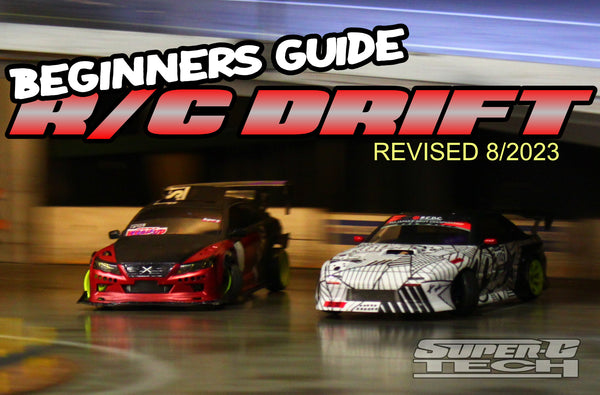
Mastering Drift Control
Choosing the Right Surface
The surface on which you drift plays a significant role in the control and performance of your RC drift car. Concrete, asphalt, or high-grip surfaces provide better traction, making it easier to maintain control of the car during drifts. On the other hand, low-grip surfaces like polished floors or smooth tiles pose a greater challenge and require more precise control inputs. Experimenting with different surfaces will help you develop the necessary skills to adapt to various traction conditions.
Adjusting the Suspension and Tires
The suspension and tires of your RC drift car directly affect its handling and control. Adjusting the suspension settings, such as ride height and damping, allows you to fine-tune the car’s response to different surface conditions. Additionally, selecting the appropriate tires for the specific surface is crucial for achieving optimal grip and sliding characteristics. Experiment with different suspension setups and tire compounds to find the setup that works best for your driving style and the current track conditions.
Learning Throttle Control
Throttle control is an essential skill to master in RC drift car racing. The amount of throttle applied determines the speed and angle of your drift. Smooth and precise throttle inputs are key to maintaining control and achieving consistent drift angles. Practice gradually applying and modulating the throttle to manipulate the slide of your RC drift car. As you gain experience, you’ll develop a sense of throttle control and be able to adjust your driving style based on the specific drift maneuver or track layout.
Mastering Steering Input
Steering input is crucial for maintaining control and achieving precise drift angles. Gradually applying and releasing steering input allows for smooth transitions between different drift maneuvers. Avoid jerky or sudden movements, as they can destabilize the car and cause spinouts. Practice steering input in combination with throttle control to master the art of maintaining consistent drift angles and smoothly transitioning from one drift to another.
Developing Car Control Skills
Developing car control skills is a continuous process that requires practice, patience, and perseverance. Start by practicing basic drift techniques on a suitable surface and gradually progress to more advanced maneuvers. Focus on maintaining control and gradually increasing your drift angles and speeds. As you gain confidence and experience, you’ll be able to anticipate and react to changes in track conditions, making split-second adjustments to maintain control and execute precise drifts.
Practicing Drift Techniques
Setting Up a Drift Course
Setting up a dedicated drift course is an excellent way to practice and refine your drifting skills. Begin by designating an area specifically for drift practice, ensuring it is free of obstacles and provides enough space for your RC drift car. Use cones or other markers to create a layout that incorporates different drift angles, straightaways, and technical sections. Setting up a drift course allows you to focus on specific skills and improve your consistency and accuracy when executing drift maneuvers.
Understanding Different Course Layouts
There are several common drift course layouts that you can practice on to develop a variety of drifting skills. Circular layouts, also known as donut courses, are ideal for practicing power slides and maintaining constant drift angles. Figure-eight layouts provide opportunities for transitions between different drift angles and improve car control skills. Additionally, technical layouts with narrow sections and sharp turns challenge your precision and throttle control. Understanding and practicing on different course layouts will help you develop a well-rounded drifting skill set.
Executing Basic Drift Maneuvers
Begin your drift practice by mastering basic drift maneuvers such as power slides, donuts, and figure eights. Start with slower speeds and gradually increase them as you gain confidence and control. Focus on maintaining consistent drift angles and car control throughout each maneuver. Experiment with different throttle input and steering techniques to refine your techniques and explore the limits of your RC drift car.
Progressing to Advanced Techniques
Once you have mastered the basic drift maneuvers, you can progress to more advanced techniques to challenge yourself and expand your skill set. Techniques such as feinting, clutch kicking, and tandem drifting require precise timing and coordination. Practice these techniques in a controlled environment and gradually increase the difficulty as you become more proficient. Don’t get discouraged if you don’t nail these techniques right away – they require patience and practice to master.
Recording and Analyzing Your Drift Runs
Recording your drift runs and analyzing them afterward is an invaluable tool for self-improvement. Use a camera or smartphone to record your drift runs from multiple angles. Pay attention to your lines, transitions, and overall car control. Look for areas where improvements can be made and experiment with different techniques to address any weaknesses. Analyzing your drift runs allows you to identify areas for improvement and track your progress over time.
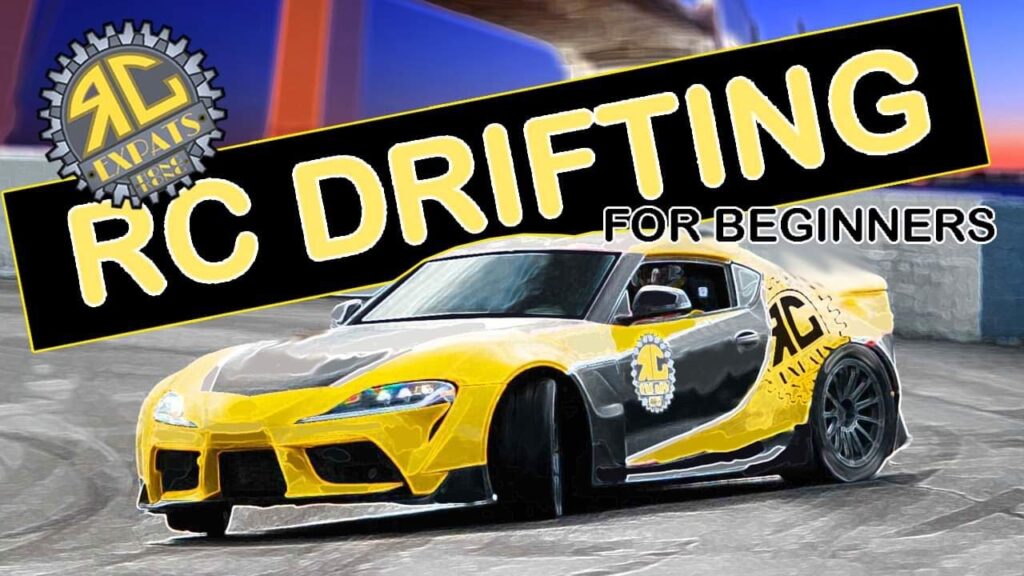
Joining RC Drift Car Racing Community
Finding Local RC Drift Car Clubs
Joining a local RC drift car club is a fantastic way to connect with fellow enthusiasts, learn from experienced drifters, and participate in organized events. Search online for RC drift car clubs in your area or ask at your local hobby store for recommendations. Being part of a community provides opportunities to share knowledge, get advice, and make new friends who share the same passion for RC drift car racing.
Attending RC Drift Car Events
Attending RC drift car events, such as drift days or drift competitions, is an excellent way to experience the excitement of RC drift car racing and learn from experienced drifters. These events offer opportunities to see different driving styles, learn new techniques, and test your skills against other racers. Participating in events allows you to gain valuable experience, receive feedback, and build your confidence as a drifter.
Participating in Competitions
Competing in RC drift car competitions takes your skills to the next level and adds an extra level of excitement to the hobby. Competitions range from friendly local events to larger-scale national or international competitions. Participating in competitions challenges your abilities and allows you to showcase your drifting skills. Don’t be intimidated by more experienced drivers – competitions are a great way to learn and improve your skills through friendly competition.
Learning from Experienced Drifters
Learning from experienced drifters is one of the best ways to improve your skills and gain valuable insights into the world of RC drift car racing. Engage with experienced drifters at local clubs or events and ask for advice or tips. Most drifters are passionate about the hobby and are more than willing to share their knowledge and help newcomers. Don’t be afraid to ask questions and learn from the experiences of those who have been drifting for longer.
Sharing Tips and Tricks
As you gain experience and knowledge in RC drift car racing, it’s important to pay it forward and share your tips and tricks with others. Sharing your insights and techniques with fellow enthusiasts fosters a sense of community and helps newcomers navigate the hobby. Participate in online forums, social media groups, or local club meetings to connect with others and offer assistance. By sharing your knowledge and experiences, you contribute to the growth and development of the RC drift car racing community.
Maintenance and Upkeep
Cleaning and Lubrication
Regular cleaning and lubrication are crucial for maintaining the performance and longevity of your RC drift car. After each drift session, remove any dirt, dust, or debris from the chassis, suspension, and drivetrain. Use a gentle brush or compressed air to clean hard-to-reach areas. Additionally, lubricate the necessary moving parts, such as ball bearings and gears, with appropriate lubricants to ensure smooth operation and prevent premature wear. Regular cleaning and lubrication will keep your RC drift car running smoothly and extend its lifespan.
Inspecting for Damage and Wear
Regularly inspect your RC drift car for any signs of damage or wear. Check for loose screws, cracked parts, or worn-out components. Pay special attention to areas prone to impact, such as the front bumper and wheels. Promptly replace any damaged or worn parts to prevent further problems and maintain the car’s performance. A thorough inspection before and after each drifting session will help you identify issues early and ensure that your RC drift car is always in optimal condition.
Replacing Worn-Out or Broken Parts
As with any RC vehicle, parts will eventually wear out or break due to the stresses of drifting. Keep a stock of spare parts specific to your RC drift car model to minimize downtime and ensure you can quickly replace any worn-out or broken components. Regularly check the wear and tear on critical parts such as tires, suspension components, and drivetrain elements. By replacing these parts as needed, you’ll maintain the performance and reliability of your RC drift car.
Upgrading and Modifying
RC drift car enthusiasts often enjoy upgrading and modifying their vehicles to enhance performance or personalize their appearance. From upgrading the motor and battery to installing aftermarket suspension parts or body kits, the possibilities for customization are vast. Carefully research and choose upgrades that are compatible with your specific RC drift car model. Upgrading and modifying your RC drift car allows you to tailor its performance and appearance to your preferences, making it a truly unique and personalized machine.
Storing and Transporting the RC Drift Car
Properly storing and transporting your RC drift car ensures its safety and longevity. Invest in a suitable storage container or carrying case that provides protection from dust, moisture, and physical damage. When not in use, store your RC drift car in a cool, dry place. Avoid extreme temperatures or prolonged exposure to direct sunlight, as it can damage the electronics and materials. When transporting your RC drift car, secure it in a protective bag or box to prevent any accidental damage during transit.
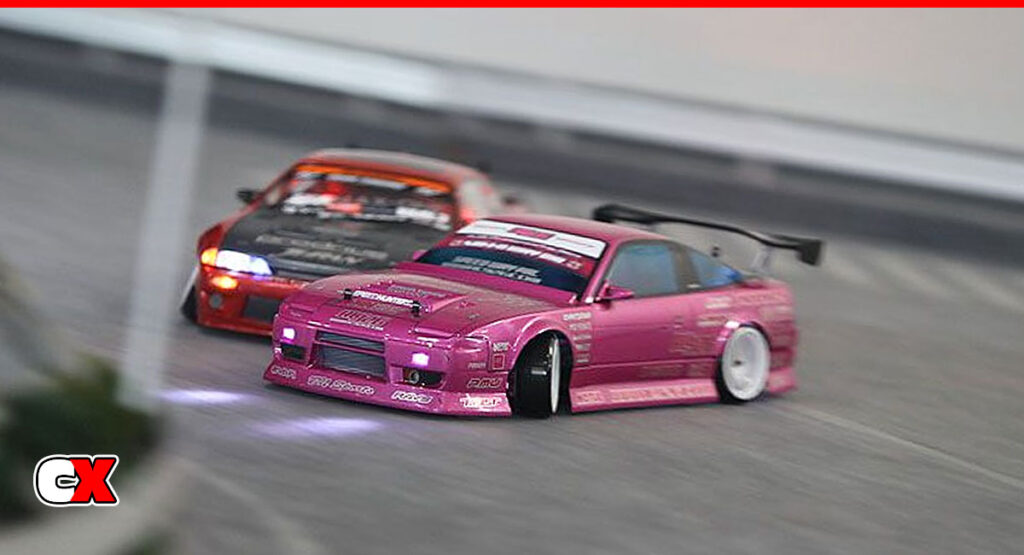
Troubleshooting Common Issues
Troubleshooting Electrical Problems
Electrical issues can occur in RC drift cars, leading to a loss of power or control. If you experience electrical problems, start by checking the battery and connections. Ensure that the battery is charged and properly connected to the electronic speed controller (ESC). If the issue persists, inspect the wiring for any loose or damaged connections. Troubleshooting electrical problems often requires patience and attention to detail, but resolving these issues will ensure that your RC drift car operates smoothly.
Handling Drivetrain and Suspension Issues
Drivetrain and suspension issues can affect the performance and handling of your RC drift car. If you notice unusual noises, vibrations, or difficulties in controlling the car, inspect the drivetrain and suspension components. Look for loose screws, damaged gears, or worn-out bearings. Tighten any loose screws, replace any damaged or worn parts, and ensure that the suspension is properly adjusted. Regular maintenance and inspection of the drivetrain and suspension will prevent issues and keep your RC drift car in top working condition.
Dealing with Motor and Battery Performance
Motor and battery performance can sometimes be a source of concern for RC drift car owners. If you notice a decrease in power or shorter run times, start by checking the battery’s charge level and condition. Recharge or replace the battery as necessary. If the motor performance seems sluggish, inspect the motor and make sure it is clean and free of debris. In some cases, upgrading the motor or battery to a more powerful option may be necessary to achieve the desired performance.
Resolving Tuning and Setup Concerns
Tuning and setup concerns can arise when trying to optimize your RC drift car’s performance. If you’re experiencing issues with stability, traction, or overall handling, consider adjusting the suspension settings, tire compounds, or weight distribution. Small changes can have a significant impact on the car’s behavior, so don’t be afraid to experiment and fine-tune your setup until you achieve the desired results. Keep a record of any changes you make, as well as their effects, to help guide future adjustments.
Troubleshooting Remote Control Problems
If you encounter issues with your remote control’s signal or functionality, start by checking the batteries and ensuring they’re properly inserted and charged. Inspect the transmitter’s antenna for any damage, as this can affect the range of the signal. If the problem persists, try re-binding the transmitter and the receiver to establish a stable connection. If all else fails, consult the user manual or contact the manufacturer for further troubleshooting steps or assistance. A reliable remote control is essential for precise control of your RC drift car, so addressing any issues promptly is crucial.
Advanced Techniques and Tips
Managing Weight Transfer
Mastering weight transfer is crucial for executing more advanced drift techniques. By understanding how weight shifts during acceleration, braking, and cornering, you can manipulate the car’s handling characteristics and drift angles. Practice smooth and deliberate weight transfer through precise throttle and brake control. Gradually increase the aggressiveness of weight transfers to add dynamicity and style to your drifts.
Using a Gyro for Improved Stability
Using a gyro, also known as a stability control system, can help improve the stability and control of your RC drift car. A gyro senses the car’s movement and automatically adjusts the steering input to help maintain stability during drifts. This can be particularly useful for beginners or when dealing with challenging surfaces. Experiment with different gyro settings to find the balance that suits your driving style and skill level.
Exploring Drift Tuning Options
Drift tuning options, such as adjustable suspension, differential, and motor settings, allow you to fine-tune your RC drift car’s performance to suit your preferences. Experiment with different settings to achieve the ideal balance between grip and slide. Adjust the suspension to control the car’s responsiveness and handling characteristics. Fine-tune the differential to manipulate how power is distributed between the wheels. Explore motor settings to optimize performance based on the track conditions or your driving style.
Advanced Drift Line Techniques
Advanced drift line techniques involve exploring different racing lines to optimize your speed, angle, and drift transitions. Experiment with different entry points, apexes, and exits to find the most effective line for each section of the drift course. The ideal line often varies based on the layout of the course and the specific drift technique being executed. Observing experienced drifters and analyzing their lines can provide valuable insights and inspiration for developing your own advanced drift line techniques.
Executing Tandem Drifts
Once you have mastered individual drift maneuvers, tandem drifting allows you to take your skills to the next level. Tandem drifting involves drifting alongside other RC drift cars, mimicking their lines, speed, and drift angles. It requires precise car control and coordination with the other drivers to execute synchronized drifts. Start with simple tandem drifts and gradually increase the complexity as you become more comfortable and proficient. Tandem drifting adds an exciting and competitive element to RC drift car racing and provides an opportunity to showcase your skills in a dynamic and thrilling manner.
By following this comprehensive guide, you will be well on your way to becoming a skilled RC drift car racer. Remember to start with the basics and gradually progress to more advanced techniques. Practice, patience, and a love for the hobby will take you far on your RC drift car racing journey. Enjoy the process, be open to learning from others, and most importantly, have fun drifting!
